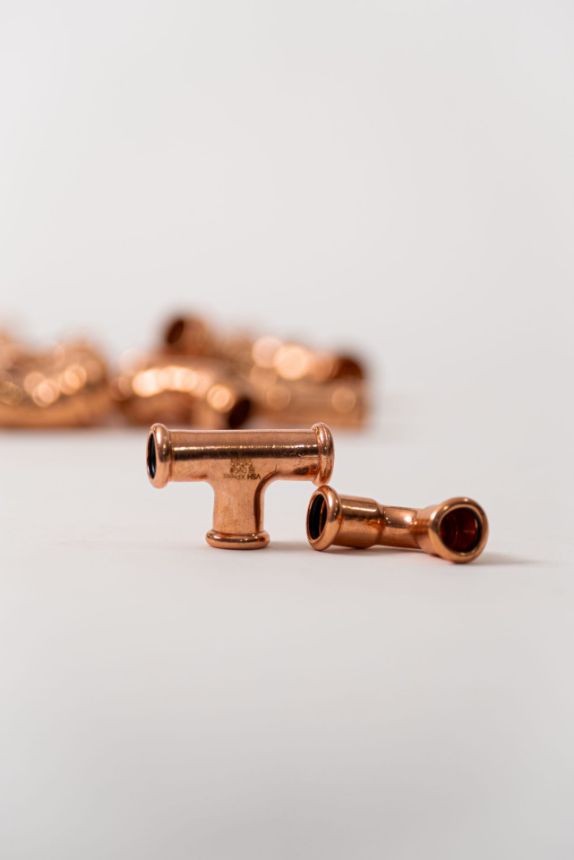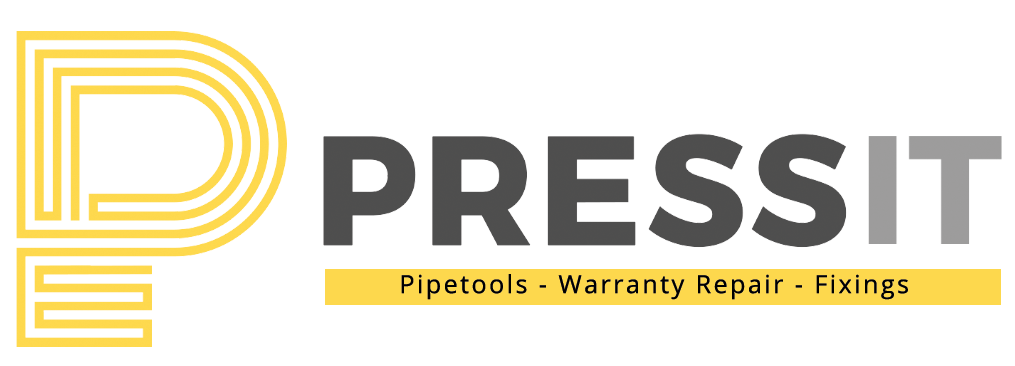
Introduction to Copper Compression Fittings
Copper compression fittings are mechanical connectors designed to create a secure joint between copper pipes or tubes. They consist of three main components: the compression nut, the compression ring (also known as the ferrule), and the fitting body. When properly assembled, these components form a tight seal, preventing leaks and ensuring the integrity of the connection.
Understanding the Benefits of Copper Compression Fittings
Copper compression fittings offer several advantages over other types of connectors. Firstly, they provide a strong and durable connection that can withstand high pressure and temperature fluctuations. This makes them suitable for various applications, including plumbing systems, HVAC installations, and gas pipelines.
Additionally, copper compression fittings are easy to install and require minimal tools. They provide a reliable connection without the need for soldering or specialised equipment. This makes them a preferred choice for DIY enthusiasts and professionals alike.
Moreover, copper compression fittings are reusable, allowing for disassembly and reconnection without significant damage to the components. This flexibility is especially beneficial during repairs or modifications, as it eliminates the need to replace the entire fitting.
Different Types of Copper Compression Fittings
Copper compression fittings are available in various types to accommodate different installation requirements. Understanding the different types will help you choose the right fitting for your specific application.
- Standard Copper Compression Fittings
Standard copper compression fittings are the most commonly used type. They consist of a compression nut, ferrule, and fitting body. These fittings are suitable for connecting copper pipes in plumbing systems, irrigation systems, and other applications where a secure and leak-free joint is essential.
- Flare Copper Compression Fittings
Flare copper compression fittings are specifically designed for connecting copper pipes to gas appliances. They feature a flared end that creates a tight seal when compressed against the fitting body. These fittings are commonly used in gas stoves, boilers, and water heaters.
- Push-Fit Copper Compression Fittings
Push-fit copper compression fittings provide a quick and easy installation option. These fittings have a push-to-connect mechanism that eliminates the need for tools or soldering. They are ideal for situations where time is of the essence, such as repairs or temporary installations.
How to Choose the Right Copper Compression Fittings
Choosing the right copper compression fittings is crucial to ensure a proper and reliable connection. Consider the following factors when selecting your fittings:
- Consider the Application
Determine the specific application for which you need the copper compression fittings. Different applications may have varying requirements in terms of pressure rating, temperature range, and compatibility with specific fluids or gases.
- Determine the Size and Material
Measure the diameter of the copper pipe or tubing to determine the appropriate fitting size. Copper compression fittings are available in various sizes to accommodate different pipe dimensions. Additionally, consider the material of the fitting body, such as brass or bronze, based on your application’s requirements.
- Check for Compatibility
Ensure that the copper compression fittings you choose are compatible with the type of pipe or tubing you are using. Consider factors such as the wall thickness and the material composition of the pipe to ensure a proper fit and reliable connection.
Step-by-Step Guide to Installing Copper Compression Fittings
Proper installation is crucial for ensuring a leak-free connection with copper compression fittings. Follow these steps for a successful installation:
- Gather the Required Tools and Materials
Before starting the installation process, gather all the necessary tools and materials. This may include copper pipes or tubing, copper compression fittings, a pipe cutter, a deburring tool, and an adjustable wrench.
- Cut the Copper Pipe to Length
Measure and mark the copper pipe or tubing at the desired length using a measuring tape. Use a pipe cutter to make a clean and precise cut. Ensure that the cut is perpendicular to the pipe to ensure a proper fit.
- Deburr and Clean the Pipe
After cutting the pipe, use a deburring tool to remove any rough edges or burrs from the inside and outside of the pipe. This step is crucial to ensure a smooth insertion and prevent leaks.
- Slide the Compression Nut and Ferrule onto the Pipe
Slide the compression nut onto the pipe, followed by the compression ferrule. Ensure that the ferrule is placed with the tapered end facing towards the end of the pipe.
- Insert the Pipe into the Compression Fitting
Insert the pipe into the fitting body until it reaches the backstop or the shoulder inside the fitting. Ensure that the pipe is fully inserted and seated securely.
- Tighten the Compression Nut
Using an adjustable wrench, tighten the compression nut clockwise until it is snug against the fitting body. Avoid over-tightening, as it can damage the fittings or cause leaks.
- Check for Leaks
Once the compression nut is tightened, turn on the water supply or pressure test the connection to check for any leaks. Inspect the connection carefully and make any necessary adjustments.
Tips for Maintaining Copper Compression Fittings
Proper maintenance is essential for the longevity and performance of copper compression fittings. Here are some tips to help you maintain your fittings:
- Regularly Inspect for Leaks
Periodically inspect your copper compression fittings for any signs of leaks. Look for water drips or stains around the connection points. If you notice any leaks, promptly address them to prevent further damage.
- Avoid Over-tightening the Compression Nut
While it’s important to tighten the compression nut to create a secure seal, avoid over-tightening it. Over-tightening can damage the fittings or distort the ferrule, leading to leaks. Tighten the nut until it is snug, but not excessively tight.
- Protect from Corrosion
Copper compression fittings are resistant to corrosion, but it’s still important to protect them from corrosive substances. Avoid exposing the fittings to chemicals or corrosive environments that can degrade the copper or the sealing components.
- Follow Manufacturer Guidelines
Always refer to the manufacturer’s guidelines and instructions when installing or maintaining your copper compression fittings. Manufacturers provide specific recommendations for installation techniques, torque values, and maintenance procedures that should be followed for optimal performance.
Common Mistakes to Avoid with Copper Compression Fittings
Avoiding common mistakes during the installation and use of copper compression fittings can help ensure a successful and leak-free connection. Here are some mistakes to watch out for:
- Using the Wrong Type of Fitting
Using the wrong type of copper compression fitting for your application can result in an improper connection and potential leaks. Make sure you select the appropriate fitting type based on your specific needs, such as standard fittings for plumbing or flare fittings for gas applications.
- Incorrect Pipe Preparation
Improper preparation of the copper pipe before installation can lead to leaks. Always deburr the pipe and clean it thoroughly to remove any debris or rough edges that can compromise the seal.
- Over-tightening or Under-tightening
Finding the right balance when tightening the compression nut is crucial. Over-tightening can damage the fittings or distort the ferrule, while under-tightening can result in leaks. Follow the manufacturer’s instructions and tighten the nut until it is snug and secure.
- Ignoring Leaks
Ignoring leaks can lead to further damage and potential water damage to your property. If you notice any leaks, address them promptly by tightening the compression nut or replacing the fitting if necessary.
Troubleshooting Common Issues with Copper Compression Fittings
Despite their reliability, copper compression fittings may encounter some issues. Here are common problems you may encounter and how to troubleshoot them:
- Leaks at the Connection
If you experience leaks at the connection, try tightening the compression nut slightly. Ensure that the pipe is fully inserted into the fitting body. If the leak persists, disassemble the connection, inspect the ferrule for damage, and replace it if necessary.
- Difficulty in Tightening the Compression Nut
If you find it challenging to tighten the compression nut, check if the pipe is properly deburred and clean. Any debris or rough edges can hinder the nut from turning smoothly. Ensure that the nut is aligned correctly with the threads and try again.
- Damage to the Compression Nut or Ferrule
If the compression nut or ferrule gets damaged during installation or maintenance, it’s crucial to replace them. Damaged components can compromise the seal and lead to leaks. Always keep spare fittings on hand for quick replacements if needed.
Advantages and Disadvantages of Copper Compression Fittings
Copper compression fittings offer several advantages, but they also have some limitations. Here’s an overview of their pros and cons:
- Advantages
- Strong and durable connection
- Suitable for high-pressure and temperature applications
- Easy to install without soldering
- Reusable and can be disassembled
- Versatile and compatible with various pipe sizes and materials
- Resistant to corrosion
- Suitable for both DIY and professional installations
- Disadvantages
- Can be more expensive than other types of fittings
- Requires proper pipe preparation for optimal performance
- May require periodic maintenance and inspection for leaks
- Limited flexibility compared to flexible pipe connectors
In conclusion, copper compression fittings provide a reliable and durable solution for joining copper pipes. Their ease of installation, versatility, and resistance to corrosion make them a popular choice for various applications. By following proper installation techniques, regular maintenance, and addressing any issues promptly, you can ensure a leak-free and long-lasting connection with copper compression fittings.
FAQs
1. Are copper compression fittings suitable for both residential and commercial plumbing?
Yes, copper compression fittings are suitable for both residential and commercial plumbing applications. They provide a secure and leak-free connection, making them ideal for various plumbing systems.
2. Can copper compression fittings be used with PEX pipes?
Copper compression fittings are primarily designed for use with copper pipes. While there are some fittings available that allow for connection to PEX pipes, it’s essential to check the compatibility and follow the manufacturer’s guidelines.
3. How long do copper compression fittings last?
With proper installation and maintenance, copper compression fittings can last for many years. Regular inspection for leaks and addressing any issues promptly will help prolong their lifespan.
4. Can I reuse copper compression fittings?
Yes, one of the advantages of copper compression fittings is their reusability. They can be disassembled and reconnected without significant damage to the components. However, it’s important to inspect the fittings for any signs of wear or damage before reuse.
5. Are there any alternatives to copper compression fittings?
Yes, there are other types of fittings available, such as soldered fittings, push-fit fittings, and threaded fittings. The choice of fitting depends on the specific application and installation requirements. Consult with a professional or refer to manufacturer guidelines to determine the most suitable option for your needs.
